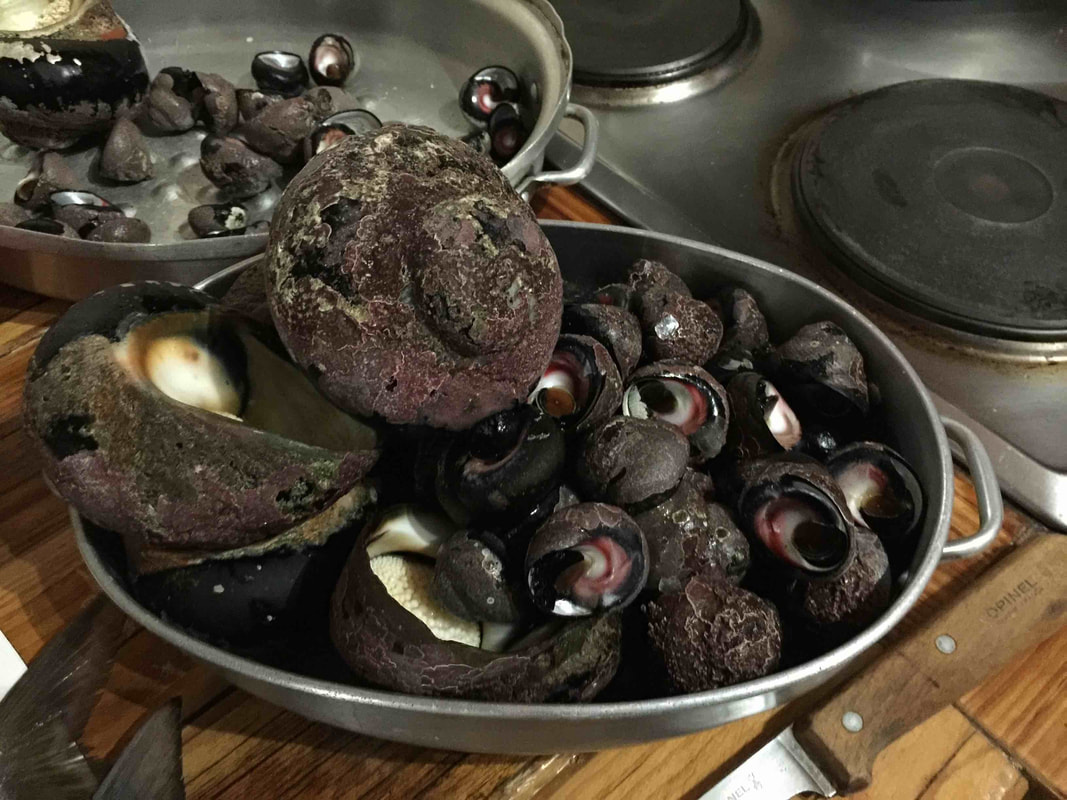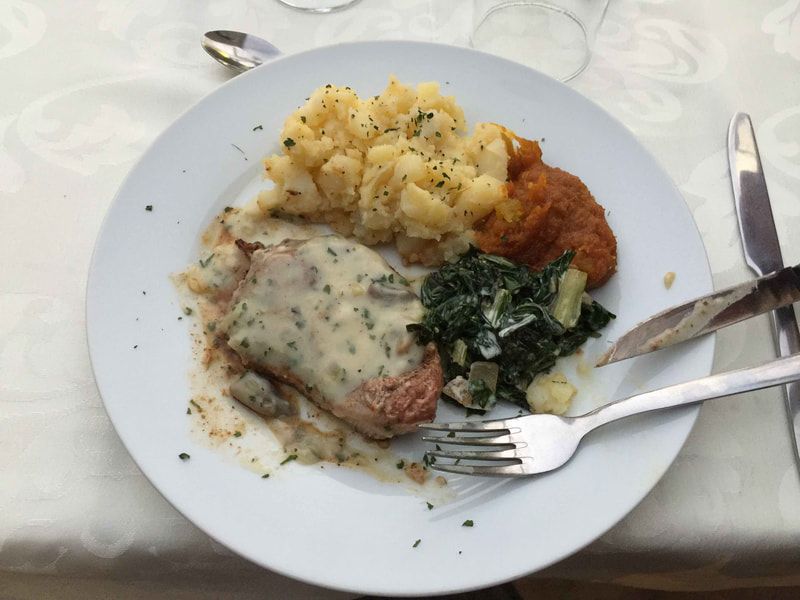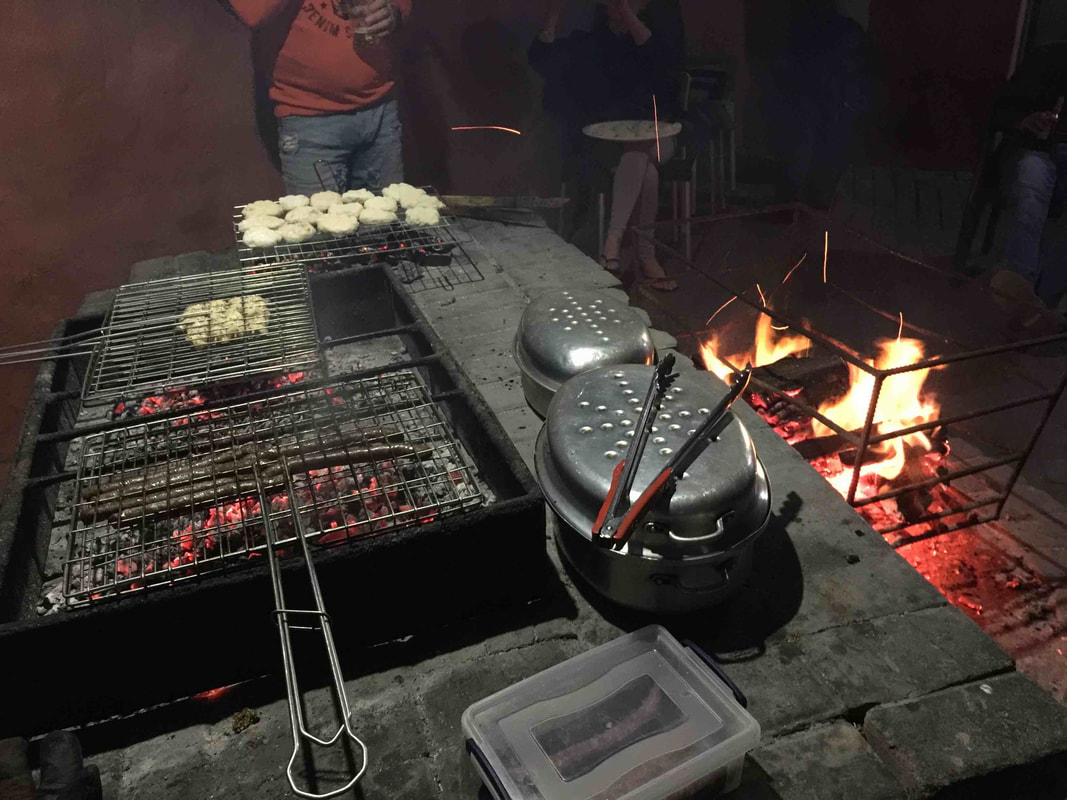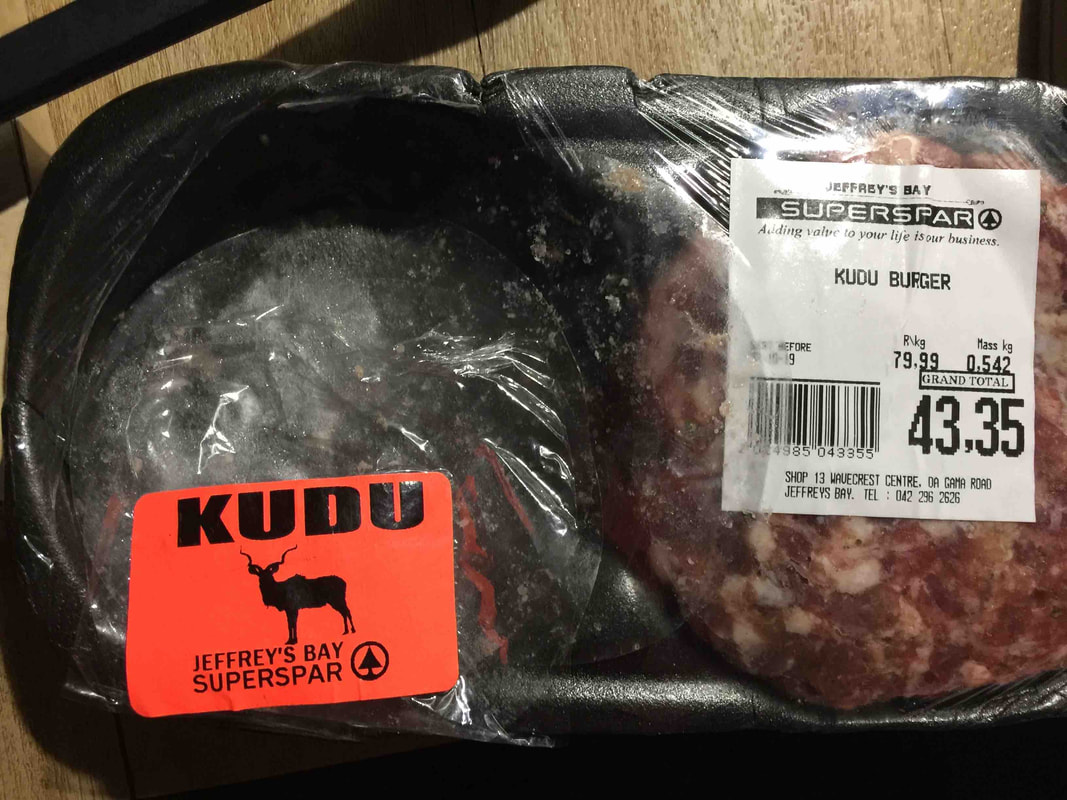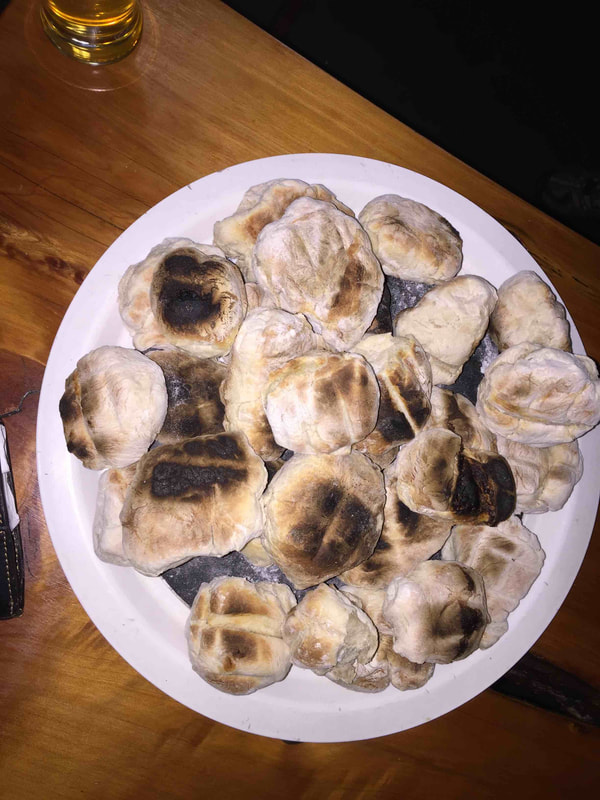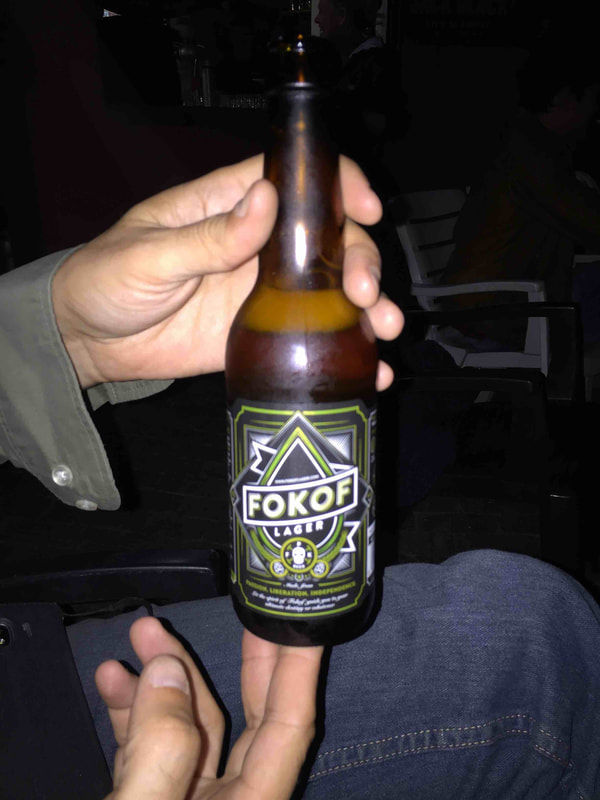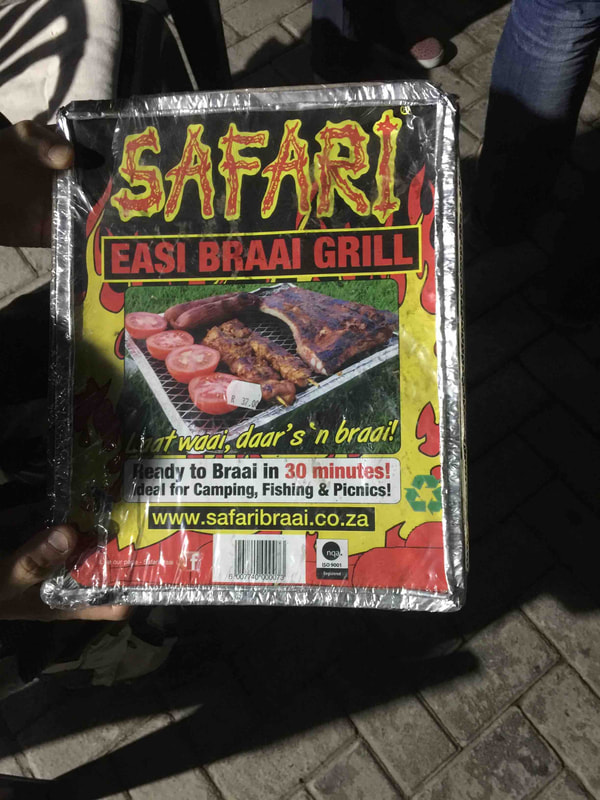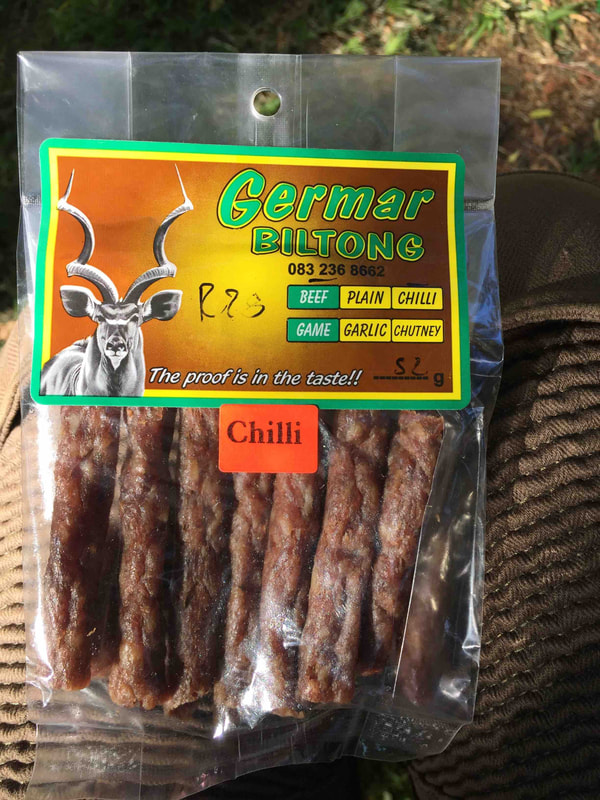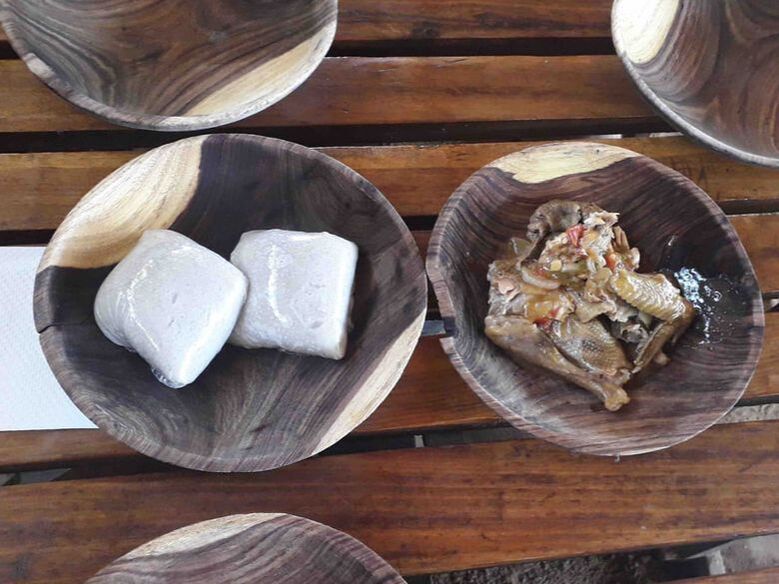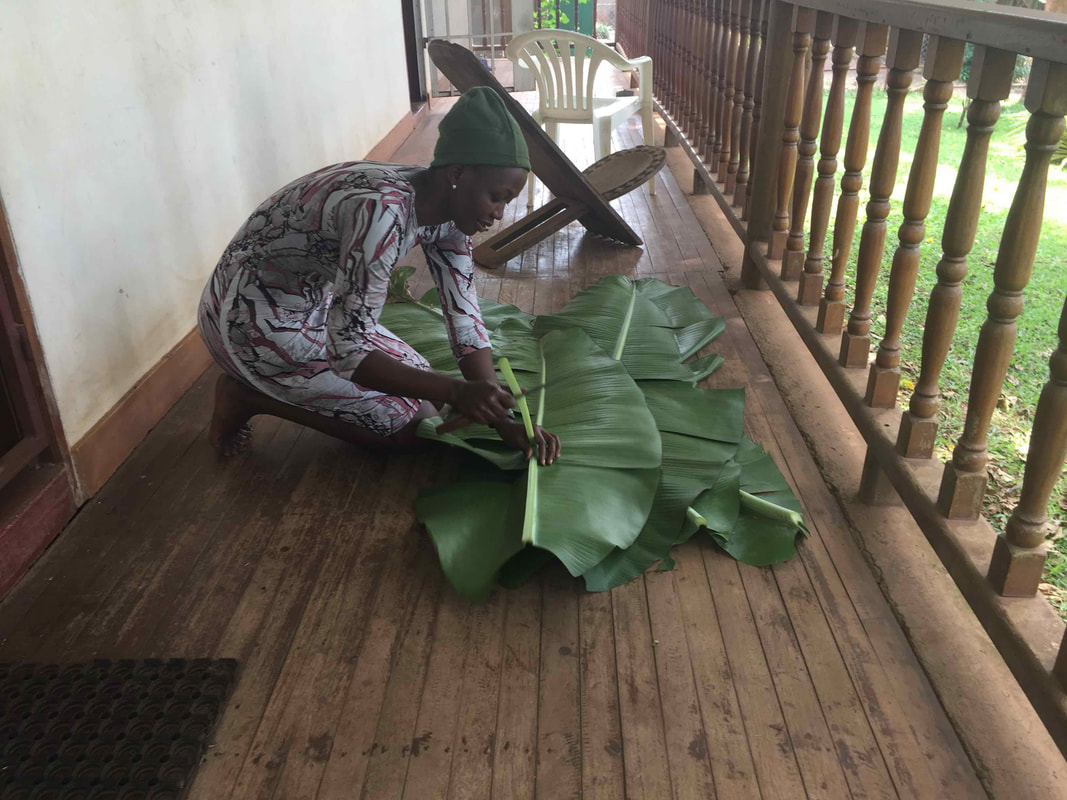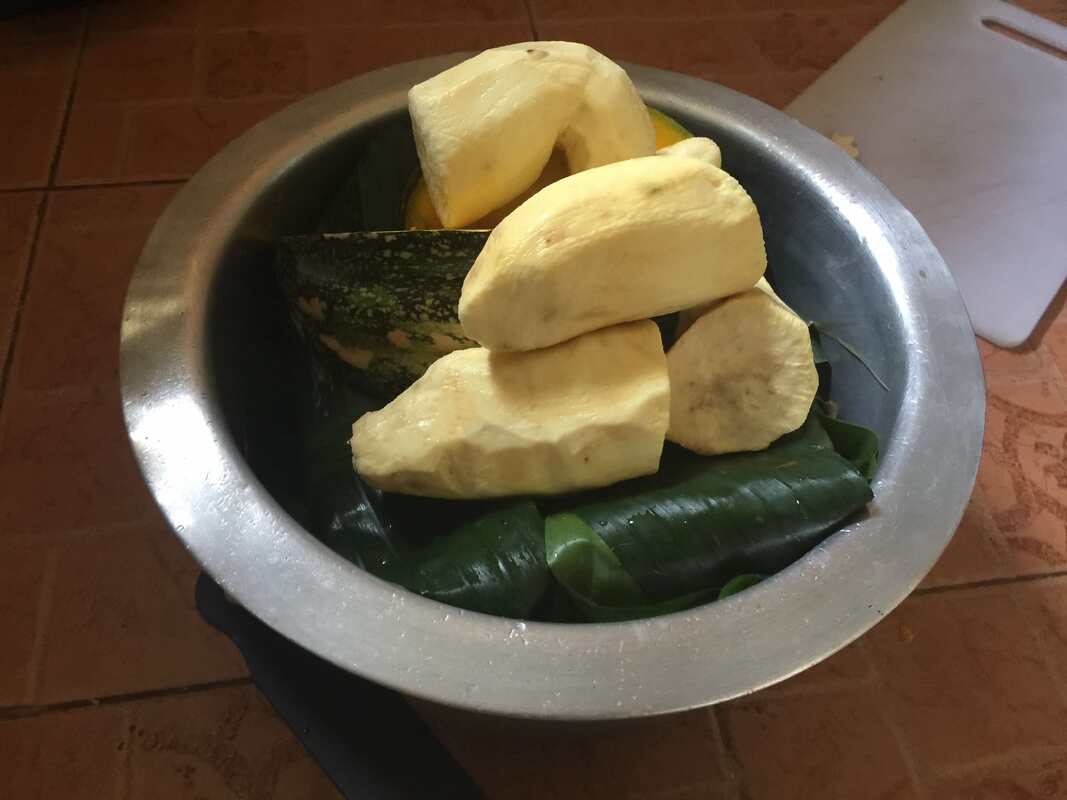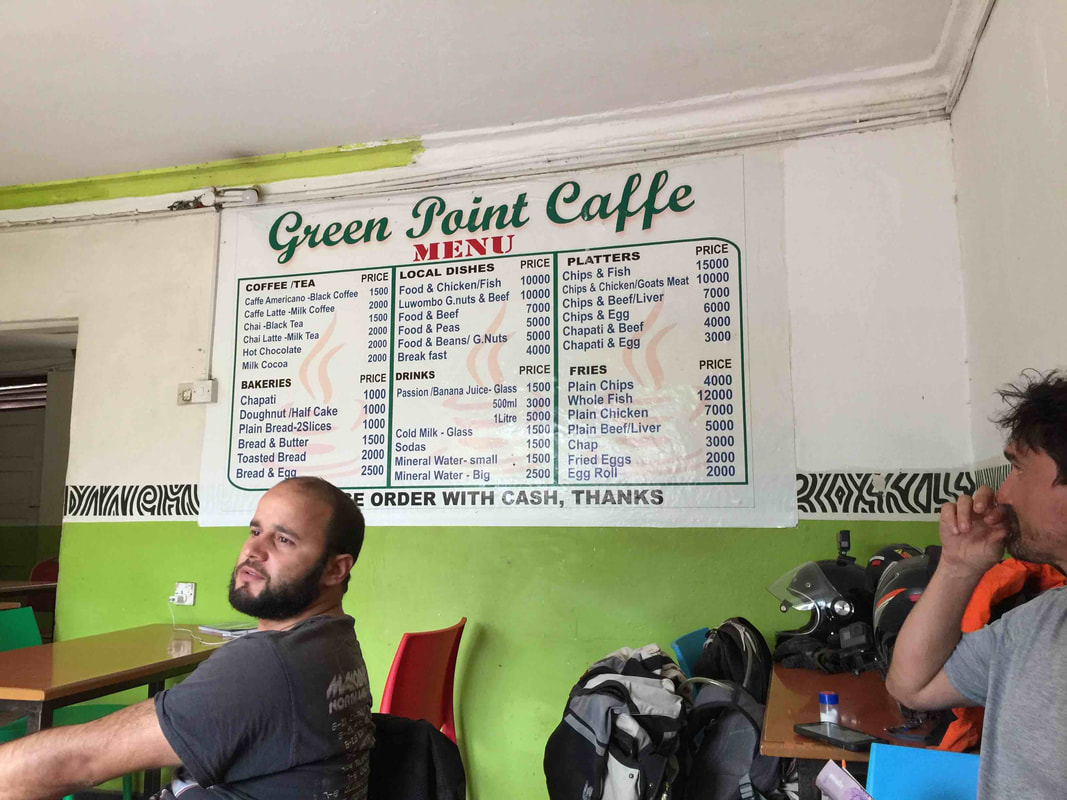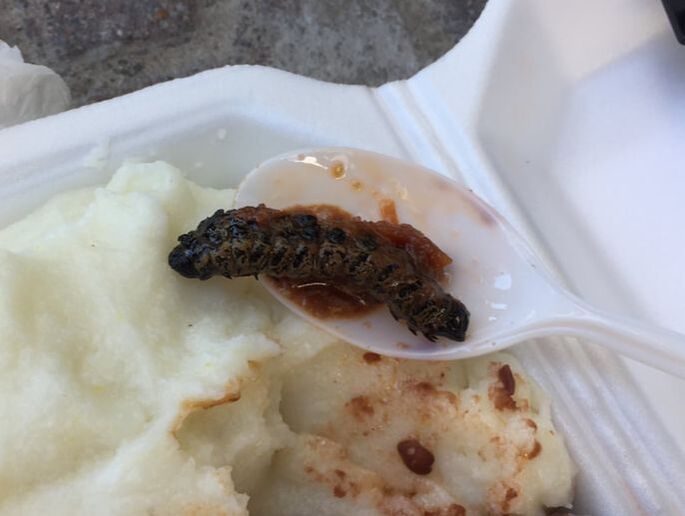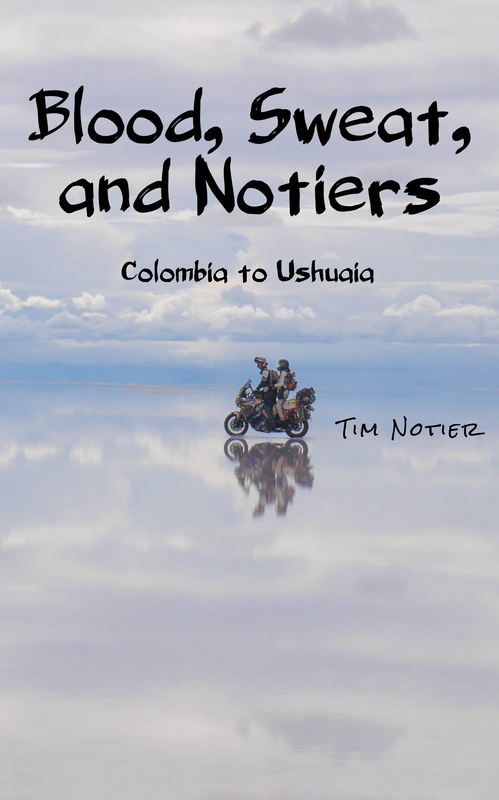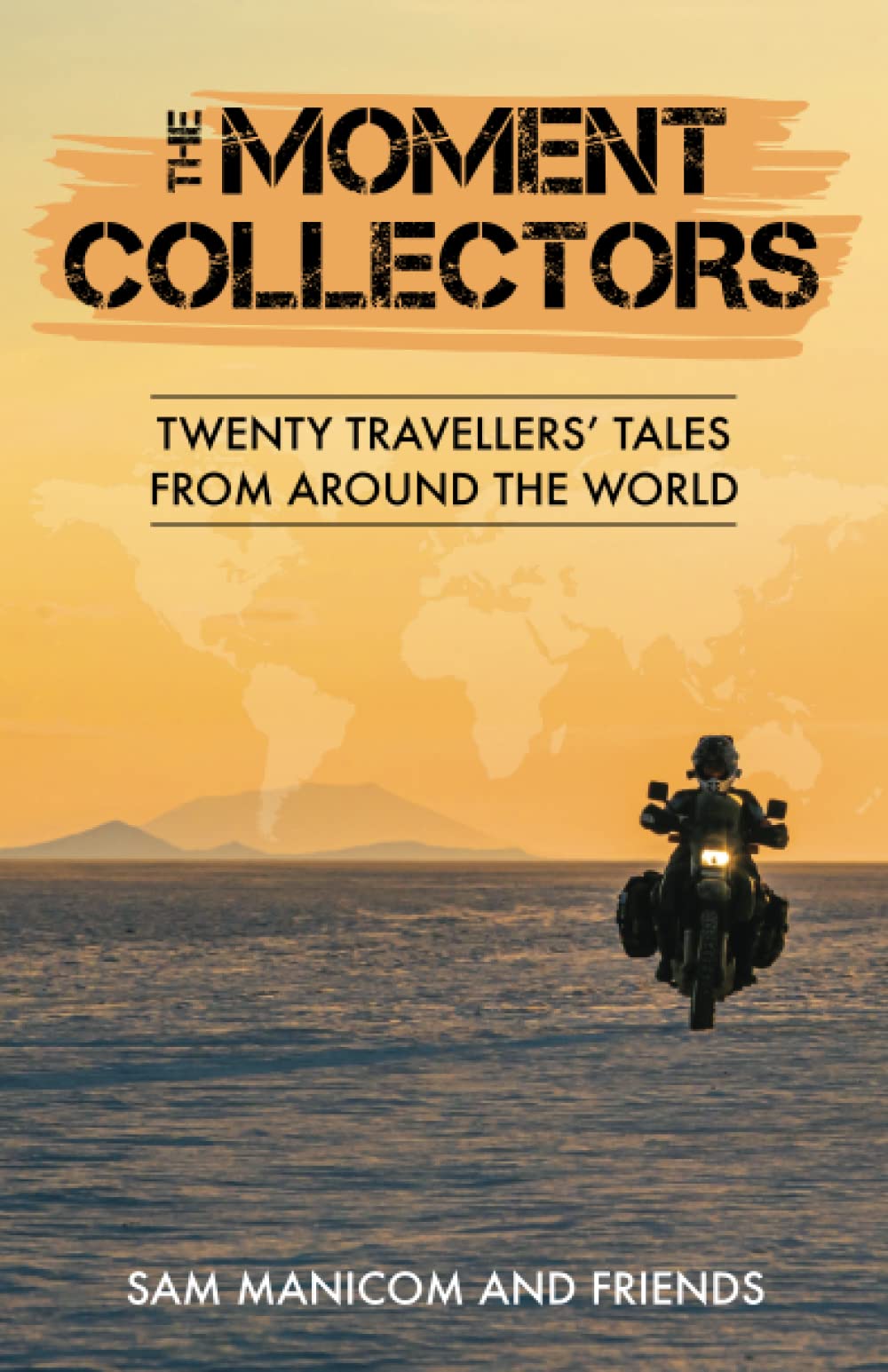By Marisa NotierThe Notier NotesOur Sunday Scoop Before coming to Africa, I realized I had no idea what a typical African dish was. Everyone knows Chinese food, Mexican food, Italian food, and Indian food, but what in the world was African food? And why was it that we didn't have an African restaurant on every other block in America like we do with so many other types of cuisine? Well, I was about to find out that we really should have an African restaurant on every other block, because African cuisine is delicious. We started off in South Africa, which has some of the most diverse food on the continent. This is probably due to its melting pot heritage of different cultures - you've got your German breads, your English meat pies, your Indian curries, and your hearty African stews of squash and greens. Average households in Africa usually reserve meat for special occasions, but perhaps because of the European influence on the country, South Africa has thrown that all out the window. Meat is their specialty. In fact, South Africa's greatest pastime is something called braai. Said like "fry", braai basically just means barbecue, and it's an integral part of South African life. Braai isn't just your typical barbecue of hotdogs and hamburgers. They cook up grilled cheese with tomato sandwiches (braaibroodjie), bread on a stick (stokbrood), and most importantly, boerewors (BOO-reh-vorsh) which is a coriander-spiced sausage in a spiral. Then there's all the game meats - different animals such as oryx, springbok, kudu, ostrich (oh that stuff is good!), and eland. And let's not forget all the meat jerkies you can buy throughout South Africa. Jerky is called biltong (BUL-tong) there, and you'll see entire biltong stalls at every mall and supermarket. That's where you can get your teriyaki jerky, chili jerky, fatty jerky, fresh jerky, or take home a döerwors (DROO-eh-vorsh) sausage which is like a Slim Jim with oryx meat. Once outside of South Africa, you start to get less of a meat-obsessed presence, and more of a carb-obsessed one. There is a staple starch that can be found throughout the continent that is basically just mashed up corn cooked until it forms a hardened play-dough ball. It's like grits, but not so watery. It goes by many names - in South Africa it's pap, in Zimbabwe it's sadza, in Zambia it's nshima, in Tanzania and Kenya it's ugali, and in Uganda it's called posho. Yeah, it's been hard keeping it all straight. This pap is eaten with the hands along with a flavorful meat or vegetable sauce. Before corn was brought to Africa from the Americas, they made it out of African grains such as millet or sorghum. But once corn came along with all its sweetness, it became the favorite stuff of pap. Africans love sweets and starches (who doesn't?). Their fruits are always mouth-watering, such as watermelons, guavas, mangoes, or passion fruit. And meals often come with starchy yams, squash, sweet potatoes, and cooked bananas. While I was living in Uganda, our neighbor taught me how to make a traditional Ugandan dish called matoke. Basically, it's a banana smorgasbord of bananas (actually, plantains) wrapped in banana leaves, steamed over the fire for hours, and then mashed together. You can eat it with a side of bananas (just kidding, though that has probably happened). As you can imagine with their love for carbs, ever since potatoes have been brought over from the Americas, they've become all the rage in Africa. You'll find chipsi everywhere (fries), as well as Irish (boiled potatoes). And you can't go to Tanzania without coming across chipsi mayai which is scrambled eggs and fries. It sounds weird, but it's actually an ingenious combo. East Africa has been trading with India for centuries, long before Europeans ever did. And so spices play a large role in the cuisine. It's not necessarily spicy food, just flavorful food. India has also brought chapati over to East Africa, which is a flat bread like a tortilla, and you can find someone cooking chapati on almost any street corner. Ask for a rolex in Uganda and you'll get a scrambled egg chapati wrap, which is delish. Why it's called a rolex, I have no idea. And finally, what you've all been waiting for - the weird stuff. If you've been following our travels for a while, you might have noticed that I like to eat the strangest things I can find. You might remember me eating guinea pig in Peru, and maggot grubs in Ecuador. Well, Africa's got worms. But they're not actually worms, they're caterpillars, but are called worms on menus. That's right, worms on menus. You sometimes find menu items listed as chicken with worms, or green sauce with worms. So what's it like to eat them? Well, like most insects marinated in a good sauce, they don't taste so bad. They can be a bit large, which is definitely intimidating, and the fact that you can see their little stubs for legs and colorful rippling bodies is also not very reassuring. But they taste decent. The texture is a bit chewy and you can feel the strange body parts crunching around in your mouth, but if you just remember that this is a locally-produced, environmentally-friendly, all-organic, and extremely-nutritious traditional cuisine, then it's not so bad. I hope everyone out there has a great week, and that if you ever find yourself near an African restaurant, you check it out (maybe minus the worms). Next week, I'll go over a day in the life in Nanyuki. See you then!
|
Follow UsRide with us from Chicago to Panama!
2Up and Overloaded Get inspired by the tale that started it all:
Maiden Voyage 20 author's tales of exploring the world!
The Moment Collectors Help us get 40 miles further down the road with a gallon of gas!
Become a Patron for early access to our YouTube Videos!
Subscribe to our YouTube Channel!
Subscribe to our Blog by Email
|
2Up and Overloaded
Join our clan of like-minded adventurers...
Proudly powered by Weebly
Designed by Marisa Notier

